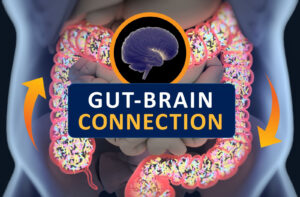Ayurveda is a lifestyle practice originating from the Indian subcontinent around 5000 years ago. The Sanskrit translation of Ayurveda means “the science of life.”It is also referred to as the “Mother of all healing” for its all around healing and health benefits.
While some scientists consider Ayurveda as “pseudoscience”, many consider it a “protoscience” – a methodology that eventually evolves into actual science. Our own modern Western medical science evolved in the same sort of way – it started off as folk protoscience too.
For example, in the West, if we get headaches or body pains, we will often turn to Aspirin. Aspirin is the common name for the painkiller acetylsalicylic acid. Want to hear a fact about it? Scientists have no idea how it works! They’ve never known. They just know it does work.
Ayurvedic medicine may one day be as respected as western allopathic medicine, and no longer seen as the “pseudoscience” its seen as by many today.
The key of Ayurveda is balance. Balance in diet, thinking, and lifestyle. Practising and knowing how to implement Ayurveda can help an individual make necessary lifestyle changes for balance.
A necessary aspect of Ayurveda to create balance is energy. Every individual as a unique energy pattern, much like a fingerprint or DNA. Energy is comprised of a combination of emotional, physical, and mental characteristics.
Many factors of life can disturb the balance of life from a balanced to unbalanced state. Some examples of the stressors that can impact balance are physical trauma, diet, relationships, and weather.
There are 3 basic principles of balance in Ayurveda and Ayurvedic medicine. Vata is the energy of movement, pitta is the energy of digestion and metabolism, and kapha being the energy of lubrication and structure.
These three forms of energy keep the cells in your body alive. Vata in the cells so fluids can move in, out, and around the body as needed, pitta so the cells can get and metabolize nutrients, and kapha maintains and lubricates the structure of the cell.
In Ayurveda, disease is caused by a lack or excess of any of these energies, or blockages caused by toxins.
Ayurveda also has the medicinal component which focuses on keeping a healthy lifestyle, as opposed to healing symptoms as they appear. Ayurvedic medicine is a preventative practise, and much of its practice involves dietary considerations and traditional supplements. Shilajit is one such important supplement
Shilajit has been used in this preventative practice for millennia to help purge the body of toxins which weaken the body’s energy fields.
Though these energy fields haven’t been scientifically proven, modern science has determined that we do need some of the components of shilajit, namely fulvic and humic acid. These two things have been scientifically proven to help the body get rid of toxins and prevent disease.
The Vedics (the culture which studies Ayurveda) were on the right track – like many of traditional practices – modern scientists are only starting to discover that some of this ancient practice is rooted in actual science.
Links:
- https://www.ayurveda.com/pdf/intro_ayurveda.pdf
- https://www.washingtonpost.com/news/wonk/wp/2015/07/23/one-big-myth-about-medicine-we-know-how-drugs-work/?noredirect=on&utm_term=.e246de99a14d
Keywords:
- Ayurveda
- Ayurvedic
- Preventative medicine
- Vedic
- Ancient medicine
- Shilajit
- Energy




